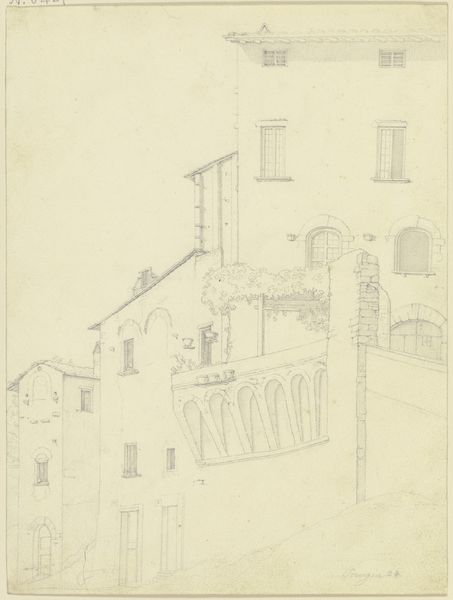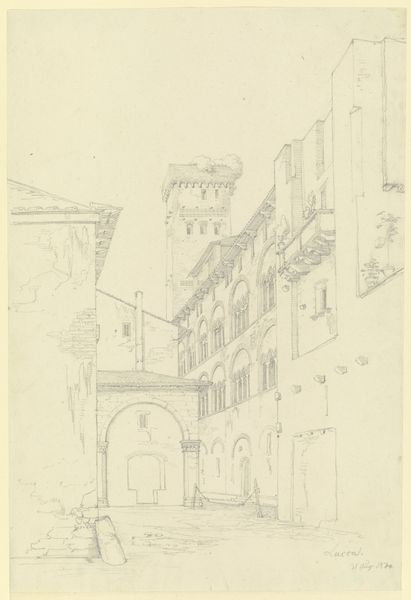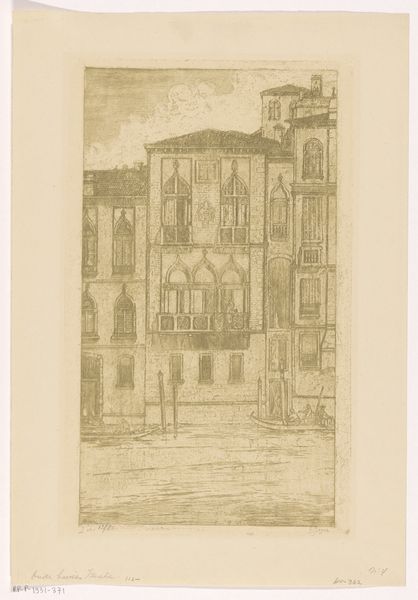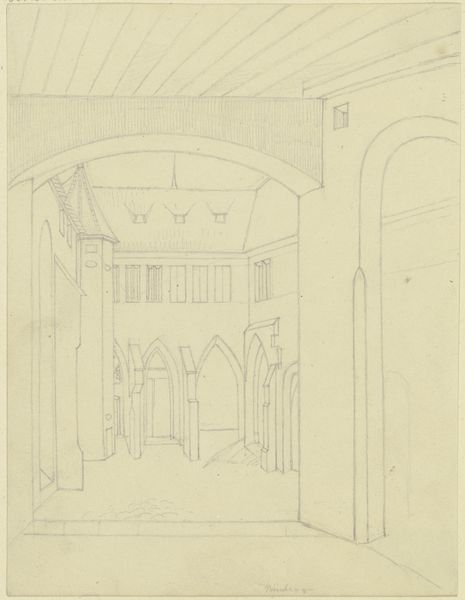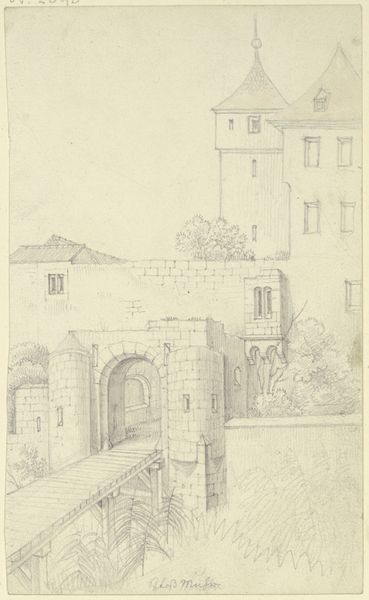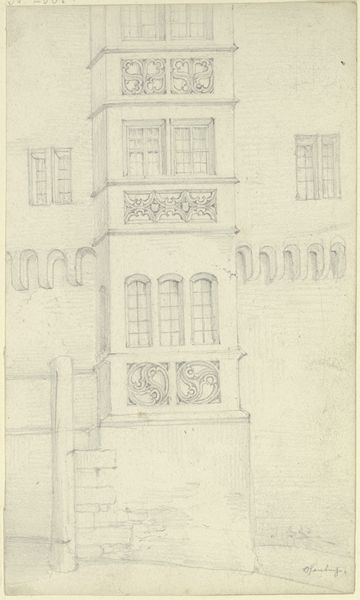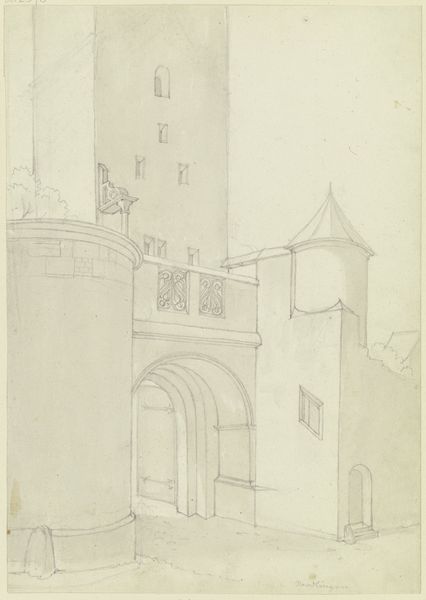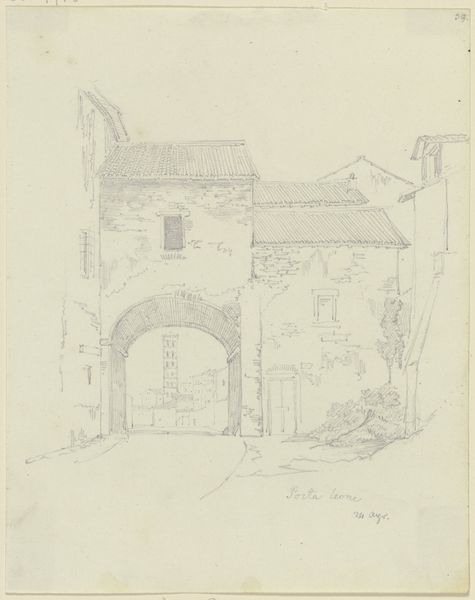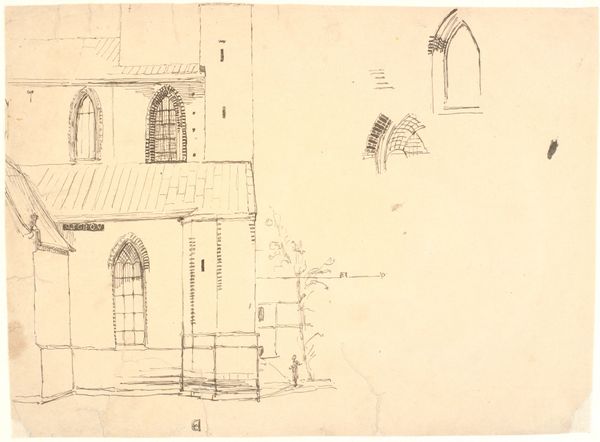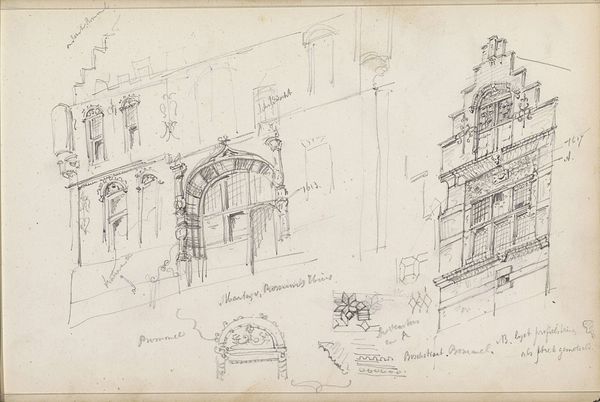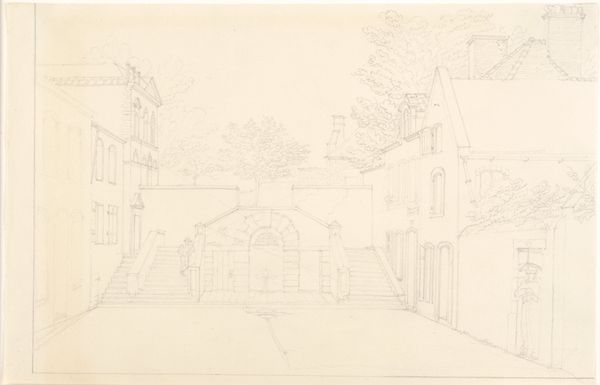
drawing, paper, architecture
#
drawing
#
landscape
#
etching
#
paper
#
architecture
Copyright: Public Domain
Editor: This drawing, "Innenhof der Burg Cadolzburg" by Karl Ballenberger, is rendered delicately on paper. It depicts a castle courtyard. What immediately strikes me is the visible process, how the lines build the space. What’s your perspective on it? Curator: Well, immediately, I see the value in examining the production of this image itself. Look closely. You can trace the labor involved, the artist’s hand moving across the page. This isn't just a picturesque scene; it’s a record of a physical process, a type of artistic labor. Consider the tools used - the graphite, the paper itself, products of industry and extraction. Editor: I see that! How does that affect how we view it compared to a finished painting? Curator: It flattens the hierarchy between "high art" and "craft," doesn't it? Here, the act of drawing, the materiality of the work itself, takes center stage. It invites us to think about the social context: who had access to these materials, the leisure to create such drawings? What kind of labor went into maintaining this Burg? Editor: That's really interesting; thinking about who had the means to produce or be represented is not something I initially considered. Does the style itself, a landscape drawing, influence this materialist reading? Curator: Absolutely. The landscape genre, often associated with romantic ideals, can also be seen as a representation of land ownership, of resource control. Think about the social implications of depicting architecture – a castle – and what it represented in terms of power, construction, and materials extracted to erect that structure. This drawing might subtly hint at such consumption. Editor: It’s interesting to realize that even a seemingly simple drawing is so enmeshed in socio-economic relationships. Curator: Precisely. Seeing art through a materialist lens lets us uncover those layers, reminding us that art isn't created in a vacuum. Editor: I’ve never really considered the role of materials this deeply. This definitely changes how I'll approach art analysis from now on.
Comments
No comments
Be the first to comment and join the conversation on the ultimate creative platform.
